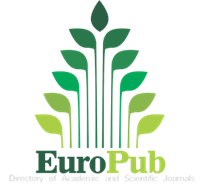Abstract
Background: Dry skin or xerosis is a layer of skin that loses moisture due to increased transepidermal water loss (TEWL). Olive oil, one of the most commonly available moisturizers, is often used to keep the skin hydrated. Skin hydration indicates the amount of water in the stratum corneum. This systematic review aimed to determine the association between olive oil application and skin hydration based on clinical assessment and TEWL parameters.
Methods: The research design used was a systematic review based on the criteria of preferred reporting items for systematic reviews and meta-analyses (PRISMA). This systematic review search used PubMed, ProQuest, Google Scholar, CINAHL, and NLM Catalog databases. The risk of bias in the literature used in this study was assessed using the Revised Cochrane risk-of-bias tool for randomized trials (RoB 2).
Results: Five articles were included in this systematic review in which topical intervention on the skin was used with olive oil and other oils, placebo, or no therapy as controls. Olive oil can improve skin conditions clinically and provide various beneficial effects such as antioxidants and anti-inflammatory, but the oleic acid content, which is the main component of olive oil, has detrimental effects on the skin.
Conclusion: This systematic review reveals that olive oil can improve skin condition clinically, but long-term topical application of olive oil may damage the integrity of the skin and increase TEWL.
References
- Mescher, Anthony L. Junqueira’s basic histology. 13rd ed. United States: The McGraw Hill; 2013. p.364-84.
- Augustin M, Wilsmann‐Theis D, Körber A, et al. Diagnosis and treatment of xerosis cutis–a position paper. J Dtsch Dermatol Ges. 2019;17(Suppl7):3-33.
- Augustin M, Kirsten N, Körber A, et al. Prevalence, predictors and comorbidity of dry skin in the general population. J Eur Acad Dermatol Venereol. 2019;33(1):147-50. J Gen Proced Dermatol Venereol Indones. 2023;7(2):127-135 135
- Cui Z, Xin M, Yin H, Zhang J, Han F. Topical use of olive oil preparation to prevent radiodermatitis: Results of a prospective study in nasopharyngeal carcinoma patients. Int J Clin Exp Med. 2015;8(7):11000.
- Danby SG, AlEnezi T, Sultan A, et al. Effect of olive and sunflower seed oil on the adult skin barrier: Implications for neonatal skin care. Pediatr Dermatol. 2013;30(1):42-50.
- Sterne JAC, Savović J, Page MJ, et al. RoB 2: A revised tool for assessing risk of bias in randomised trials. BMJ. 2019;366:14898.
- Verallo-Rowell VM, Dillague KM, SyahTjundawan BS. Novel antibacterial and emollient effects of coconut and virgin olive oils in adult atopic dermatitis. Dermatitis. 2008;19(6):308-15.
- Cooke A, Cork MJ, Victor S, et al. Olive oil, sunflower oil or no oil for baby dry skin or massage: A pilot, assessor-blinded, randomized controlled trial (the Oil in Baby SkincaRE [OBSeRvE] study). Acta Derm Venereol. 2016;96(3):323-30.
- Al-Abdullah AA, Al-Ghamdi MA, Ibrahim NA. Effect of topical olive oil therapy on preterms in neonatal intensive care unit. JKAU: Med Sci. 2012;19(1 Sup):73-88.
- Sethi A, Kaur T, Malhotra SK, Gambhir ML. Moisturizers: The slippery road. Indian J Dermatol. 2016;61(3):279-87.
- Parker J, Scharfbillig R, Jones S. Moisturisers for the treatment of foot xerosis: A systematic review. J Foot Ankle Res. 2017;10:9.
- Kopecký A, Benda F, Němčanský J. Xerosis in patient with vitamin a deficiency-a case report. Cesk Slov Oftalmol. 2018;73(5-6):222-4.
- Mekić S, Jacobs LC, Gunn DA, et al. Prevalence and determinants for xerosis cutis in the middle-aged and elderly population: A cross-sectional study. J Am Acad Dermatol. 2019;81(4):963-9.e2.
- Varma SR, Sivaprakasam TO, Arumugam I, et al. In vitro anti-inflammatory and skin protective properties of virgin coconut oil. J Tradit Complement Med. 2018;9(1):5-14.
- Nasopoulou C, Karantonis HC, Detopoulou M, Demopoulos CA, Zabetakis I. Exploiting the anti-inflammatory properties of olive (Olea europaea) in the sustainable production of functional food and neutraceuticals. Phytochem Rev. 2014;13:445-58.
- Alnemer F, Aljohani R, Alajlan A, et al. The use of olive oil for skin health in a Saudi population: A cross-sectional study. Dermatol Reports. 2021;14(1):9364.
- Hashmi MA, Khan A, Hanif M, Farooq U, Perveen S. Traditional uses, phytochemistry, and pharmacology of Olea europaea (olive). Evid Based Complement Alternat Med. 2015;2015:541591.
- Moustgaard H, Clayton GL, Jones HE, et al. Impact of blinding on estimated treatment effects in randomised clinical trials: Metaepidemiological study. BMJ. 2020;368:l6802.
- Lin TK, Zhong L, Santiago JL. Antiinflammatory and skin barrier repair effects of topical application of some plant oils. Int J Mol Sci. 2018;19(1):70.
- Vaughn AR, Clark AK, Sivamani RK, Shi VY. Natural oils for skin-barrier repair: Ancient compounds now backed by modern science. Am J Clin Dermatol. 2018;19(1):103-17.
- Correa MCM, Mao G, Saad P, Flach CR, Mendelsohn R, Walters RM. Molecular interactions of plant oil components with stratum corneum lipids correlate with clinical measures of skin barrier function. Exp Dermatol. 2014;23(1):39-44.
- de Meza T. Should we use olive oil or sunflower oil on a preterm infant's skin. Infant. 2013;9(5):170-2.
- Kuller JM. Infant skin care products: What are the issues? Adv Neonatal Care. 2016;16(Suppl 5S):S3-12.
- Viljoen JM, Cowley A, Du Preez J, Gerber M, Du Plessis J. Penetration enhancing effects of selected natural oils utilized in topical dosage forms. Drug Dev Ind Pharm. 2015;41(12):2045-54.
- Karagounis TK, Gittler JK, Rotemberg V, Morel KD. Use of “natural” oils for moisturization: Review of olive, coconut, and sunflower seed oil. Pediatr Dermatol. 2019;36(1):9-15.
Recommended Citation
Paramitha Jaya, Ni Made Ayu Nadia; Hermawan, Melyawati; and Regina, Regina
(2023)
"Olive oil and hydration based on clinical assessment and transepidermal water loss: A systematic review,"
Journal of General - Procedural Dermatology and Venereology Indonesia: Vol. 7:
Iss.
2, Article 10.
DOI: 10.7454/jdvi.v7i2.1156
Available at:
https://scholarhub.ui.ac.id/jdvi/vol7/iss2/10






























